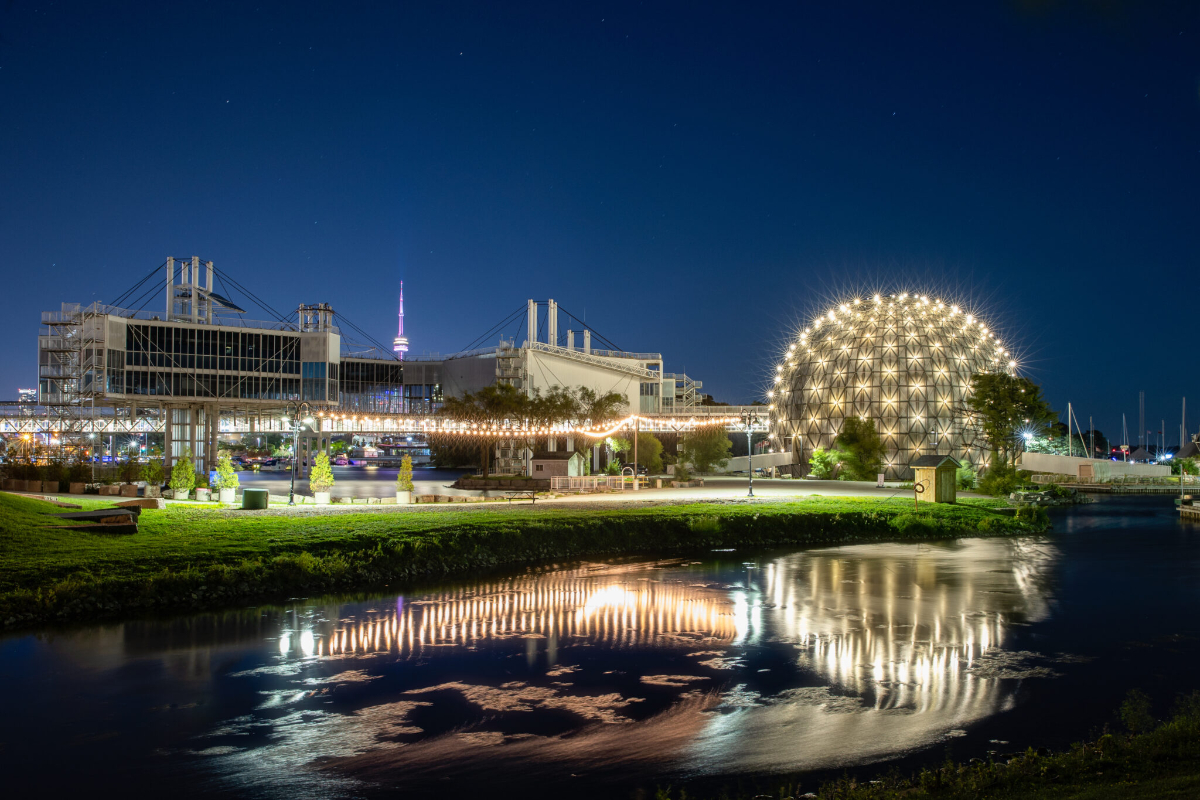
In Conversation with Cynthia Wilkey
Cynthia Wilkey has a remarkable 25 year track record in community planning and advocacy, and she’s passionate about Toronto’s waterfront. Wilkey serves as Co-Chair of the West Don Lands Committee, a coalition of neighbourhood, business, heritage and environmental organizations that has been a key stakeholder in the development of the West Don Lands, the East Bayfront and the Port Lands.
Wilkey is also former Co-Chair of Ontario Place for All. As public concern grows over the future of Ontario Place amid plans to transform the public amenity into a private spa, Ontario Place for All is working to raise awareness, engage the community, and ensure that the space remains open to all and is kept publicly accessible.
In this insightful interview, Wilkey delves into the pressing issue of Ontario Place’s future amidst the provincial government’s plans for commercial redevelopment. She highlights the role that parks play in world-class cities, the value of preserving heritage components of Ontario Place, and offers alternatives that promote public interest over commercial gain.
The Collection: Why is Ontario Place such an important public amenity?
Cynthia Wilkey: Well, let me count the ways. It’s on the water’s edge, on Lake Ontario, and represents the first attempt to try and bring people back to the waterfront. Its original intent was to democratize access to the waterfront at a time when the waterfront was not really open to the public. And for the last 50 years, it has delivered on that promise. We had a rally in January of 2019 when the plans to redevelop it were announced. Hundreds of people showed up to talk about Ontario Place and share memories. It is a unifying experience for generations of Ontarians, who came to experience the water slide, the Children’s Village, the log ride, the concerts. The free concerts at the forum were something I took advantage of when I first came to Toronto in 1975.
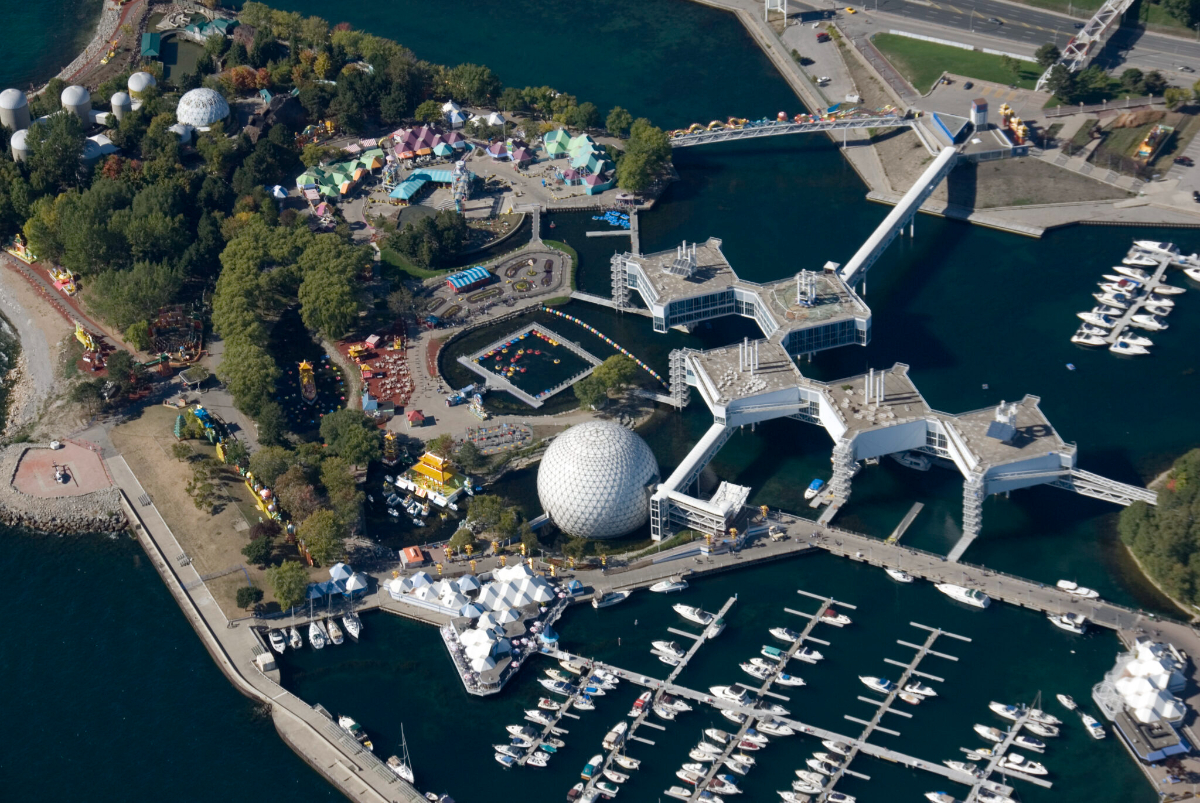
TC: Are you concerned that Toronto is losing its connection to the water?
CW: I think Toronto is rebuilding its connection to the water. What happened to Toronto has happened to many cities around the world. Waterfronts were industrialized…commercialized for shipping, and then railways came in, cutting off connection to the water. Over the last 40 years, cities with waterfronts have been trying to recover them, as ports become less important.
TC: How is Ontario Place currently being used?
CW: There are more than a million informal visitors to Ontario Place each year. People come to walk, run, cycle, swim, to picnic, and to have campfires. It’s a very well used public park. In addition, Ontario Place sponsors festivals and special events through all four seasons. And, of course, people come to the Budweiser Stage for music.
TC: There’s a new proposal in place. How would you describe the current plan?
CW: These aren’t my words, but I would call the spa, “The Mistake on the Lake.” It’s a generational mistake, that requires the clear cutting and demolition of half of the land at Ontario Place. The entire West Island, which is where people swim, where people go to bird watch…there’s 170 species that have been identified there. That will all be completely leveled to accommodate this mega spa that transforms public space into commercial space.
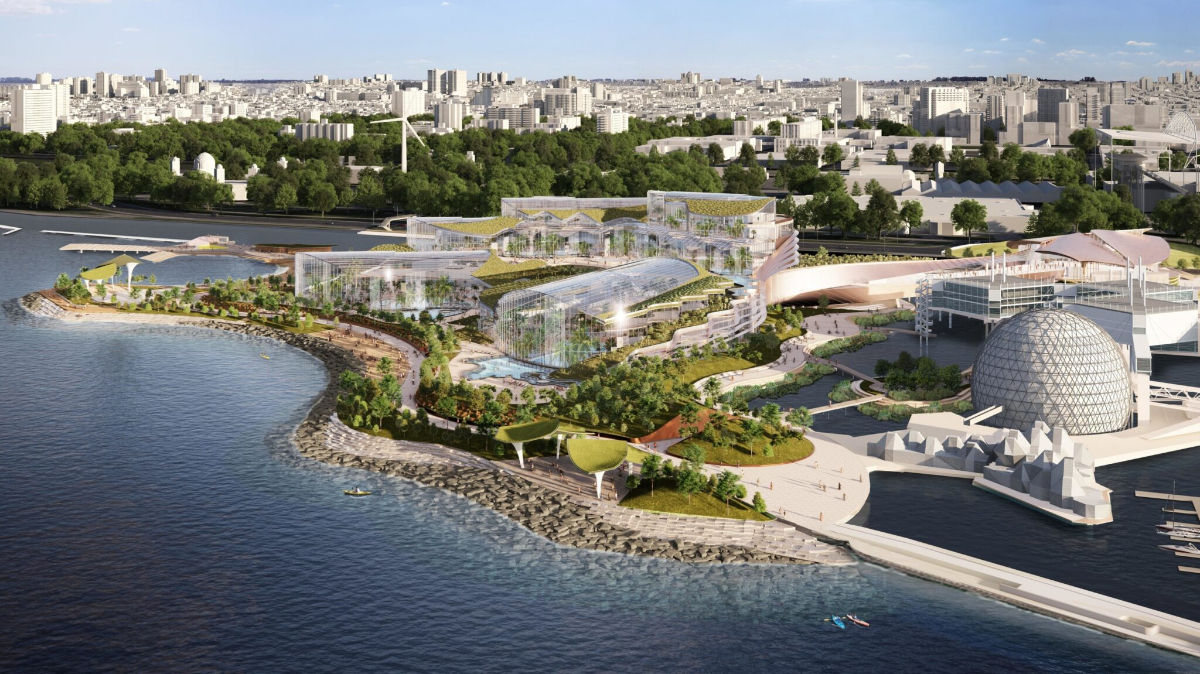
Proposed public spaces and waterfront attraction: Therme Canada | Ontario Place (CNW Group/Therme Canada)
TC: How did the plan come to pass?
CW: Totally behind closed doors. In December 2018 or January 2019, Premier Ford announced his desire to redevelop Ontario Place and turn it into what he called “a world-class entertainment complex.” A call for development was put out in May of 2019, and it made the entire Ontario Place open for redevelopment. It didn’t require the protection of anything, not Trillium Park, not the Cinesphere, not the pods…nothing except for the Budweiser Stage. It horrified people that there was no recognition that the architecture and design of Ontario Place, which is internationally recognized, meant something in that development call. There was no public participation in that process, it was just in July of 2021 that the result was announced.
TC: It’s also come out that the province and Therme have agreed to a 95-year lease term. Is that unusual?
CW: It’s ridiculous. And Ontario Place For All has been asking about the lease for more than a year. The lease was signed in 2022 or earlier…it’s conditional on a bunch of approvals, so there are off ramps for the province, but 95 years is ridiculous. That spa building is not likely to last more than 30 years. I made a Freedom of Information request in December, and it looks like we’re going to have to go to adjudication at the Information and Privacy Commission because the Province is just not going to release it.
TC: Except for the concert venue, there isn’t much energy around the site. Has Ontario Place lost its relevance or is it flourishing and just not marketed well?
CW: Yes, people lost interest in the attractions there…the water slides, the Children’s Village got closed in the middle of a controversy about what was safe for children’s play, that also resulted in the closure of school playgrounds. The various succession of governments were not prepared to invest in keeping these attractions up to date, so they gradually closed. The whole place was closed to the public except for the Budweiser Stage, when the government started a process that led to the refurbishment of the Cinesphere, so that it could go back to showing films, and to the creation of Trillium Park.
But, if you haven’t been to Trillium Park, take a look. It is a beautiful park designed by Walter Kehm of LANDInc. When you come out to that end, when you get away from the parking lots and the Budweiser Stage, you see hundreds of people using it every day as a park. And progressive cities around the world have learned that parkland is important in creating value for the city. Value in terms of health, activity, and recreation space for residents who increasingly are living in small condos. And it attracts the interest of international visitors. Look at Brooklyn Bridge Park, the High Line, Millennium Park, or the Luxembourg Gardens. Parks become economic drivers, if they’re well planned. This park has the added advantage of having the architectural and engineering heritage structures and design.
Look at the challenges we have in the 21st century, including climate change and increasing population, and then creating a very old-fashioned attraction that requires people to drive. Therme predicts that 70 percent of its users will drive to Ontario Place. We’re looking at a climate emergency, and we’re putting $12 billion into building the Ontario Line, and yet we’re taking away parkland that can be used by these growing communities and putting into it a commercial spa that people drive to.
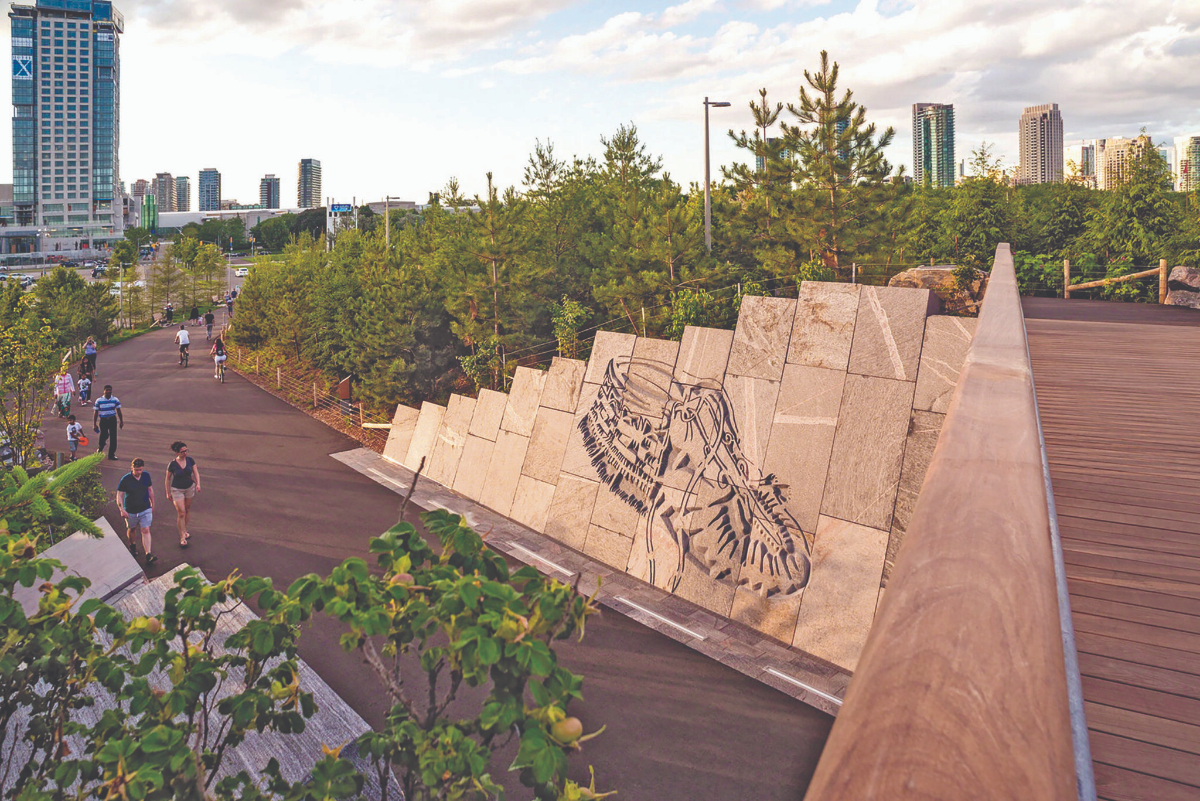
TC: How important is it to preserve heritage components and repurpose what’s already there?
CW: Ontario Place is on the World Monuments Fund’s watch list for endangered cultural spaces, along with things like the Sacred Valley of the Incas, Easter Island, and Notre Dame cathedral. It was put on that list in 2020 because of the threat of this redevelopment.
It is described by provincial documents as the most important example of 20th century modernist architecture in the province. The pods are in the process of being restored. People have thought for a while that there could be things like a satellite of the Science Centre there. There could be a freshwater institute housed in the pods, we could build on the lakeside location of the pods to actually use it for educational purposes, in cooperation with U of T or Toronto Metropolitan University, to house education and research work.
There’s the huge issue of water quality around the central waterfront. This could be a focus of innovation. So, it’s extremely important to adaptively reuse these spaces, they can’t just be museum pieces.
TC: How does Ontario Place For All want to see the site used?
CW: We would like the parkland to stay parkland. The West island is predominantly park, it should stay a park, and it should be finished to the level of Trillium Park. And we’d like to see opportunities for some institutional and public uses. It’s a great location for live music, so it would be great to see smaller live music venues. Live Nation doesn’t support the local ecosystem of music creators, so smaller venues is a good idea. And the pods could be used to highlight our museum system. So, you have tourists come down for the park, and you have a pod that’s about the Science Centre, another has the ROM, another the Aga Khan Museum. People get a taste of it, and if the connection can be made to the Ontario Line, people could just get on the subway and visit these institutions.
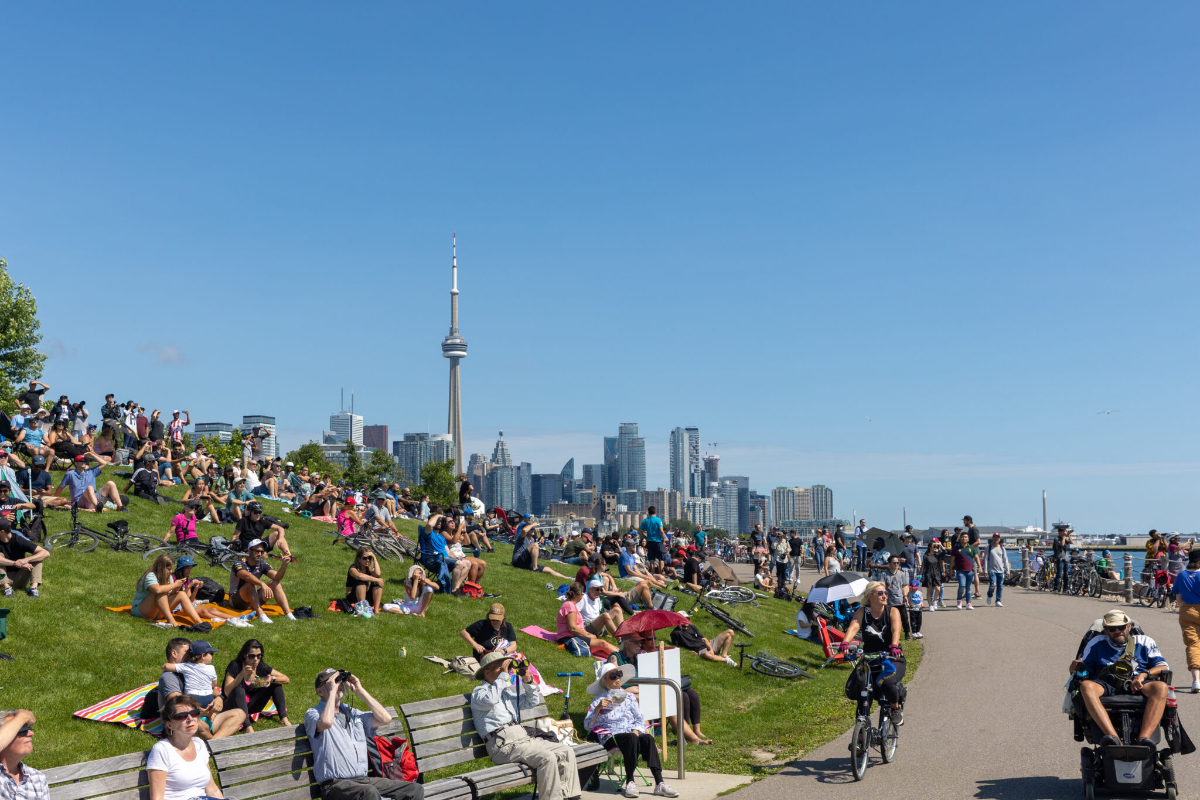
Toronto Canada – September 4, 2021 : Trillium Park packed with people waiting for the Canadian International Airshow to begin during Labour Day weekend
TC: How should citizens become involved?
CW: They need to be talking to their MPPs and their municipal councillors about their concerns. If they have friends and family in other parts of Ontario who have enjoyed Ontario Place in the past, they should be talking to them. And they should sign up with Ontario Place For All. We have lots of ideas, we have a weekly newsletter, and we have a letter people can send to the Premier.
For more information on Ontario Place For All, visit ontarioplaceforall.com
